Several years after discovering the bones of Homo naledi, Lee Berger authored a book entitled Almost Human. The book detailed his role in the discovery, and the current theories surrounding Homo naledi. Berger conceives of Homo naledi as a primitive, subhuman relative of modern people. However, this narrative seems to be at odds with the biblical account of human origins. The Bible tells us that God created man out of the dust of the ground, not through evolutionary processes. Is Homo naledi really “almost human”, or is it a fully human descendant of Adam and Eve?
The views expressed in this article reflect those of the author mentioned, and not necessarily those of New Creation.
In the previous article, we explored the recent discoveries announced by Berger’s team. While excavating in the Rising Star Cave System, they uncovered several collections of bones which may be burials. The team also documented the presence of apparent carvings on the walls of the cave. Now, we will examine how these new pieces of evidence fit into our understanding of Homo naledi.
How Can Anatomy Inform Our Understanding of Humanity?
In most practical settings, it is not hard to distinguish humans from non-humans. When walking through a busy mall, we can instantly identify the beings we pass as humans. Subconsciously, we use two main criteria: anatomy and behavior. Does this figure look human to us? Does it act like a human would?
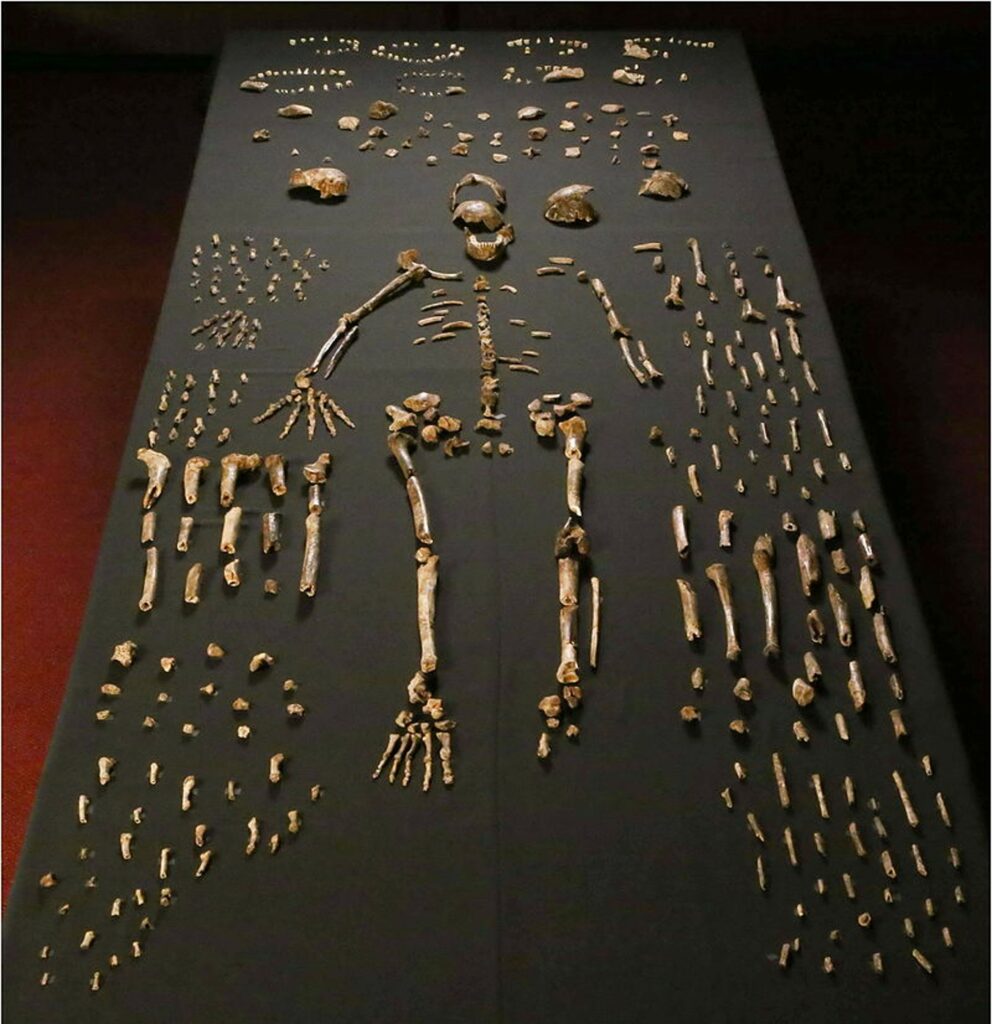
However, when it comes to the fossil record, this task becomes more difficult. In some cases, we have only a few fragmentary bones of a particular species. Thankfully, we have thousands of fossils of Homo naledi, which represent nearly every part of the body. Homo naledi is anatomically distinct from living people.
Creation scientists disagree about whether it falls within the range of human variability. We know that God gave life the ability to change over time. In his foreknowledge, He knew that organisms would need to be able to adapt to the changing world. The created kinds have greatly diversified since the creation into the many species we see today. Yet, there is only one species of human still alive: Homo sapiens. This was not always the case. The fossil record shows us that following the Flood, there were multiple human species. So, could Homo naledi represent an early, post-flood human? Or, is Homo naledi simply too different to be human?
We need to note that all humans are descendants of a single couple. Genesis 3:20 establishes this where Adam named his wife Eve. Eve’s name literally means “life” or the “mother of life”. According to the sacred author, she was given this name “because she was the mother of all living.” We can assume that Adam and Eve must have been anatomically similar to us. They lived only thousands of years ago, and this places a limit on how different we could have become from the original human state.
Another Bible passage that helps us understand man’s unique nature is Genesis 2:20. This verse records how Adam named the animals: “The man gave names to all the livestock, to the birds of the air, and to every beast of the field. But for Adam no suitable helper was found.” The birds and beasts were not suitable for Adam because they were spiritually and physically incompatible. Adam needed another human, with whom he could communicate and fulfill God’s command to multiply and fill the earth.
Was Homo naledi an ape?
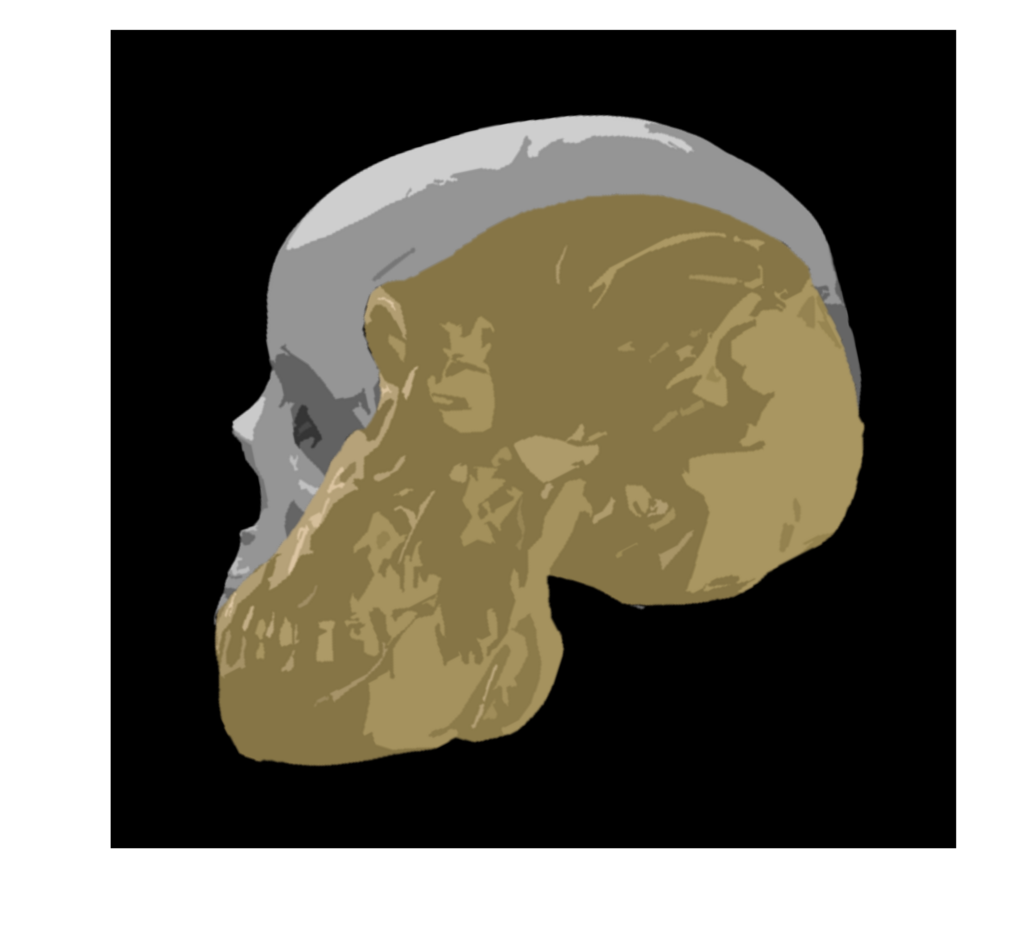
Elizabeth Mitchell, a retired medical doctor and writer for Answers in Genesis, is one of the primary proponents of the view that Homo naledi was an ape. In her work on the subject, she documents several anatomical traits which purportedly exclude Homo naledi from being human.1
First, she notes Homo naledi had a very small cranial capacity, ranging between 465 and 560 cubic centimeters. Homo naledi’s brain was half or a third the size of average modern human brains. Mitchell argues that Homo naledi’s brain size is typical of apes, not humans. However, this claim is inconsistent with her opinions of other hominin fossils. She accepts Homo floresiensis, which had an even smaller brain than Homo naledi, as a microcephalic human.2 Some of the skull bones of Homo naledi preserve impressions of the brain. Despite being small, Homo naledi’s brain appears to have been human-like. Homo naledi possessed an enlarged pars orbitalis. This part of the brain controls social interactions including speech.3 This condition is not found in apes and seems to be unique to humans. So, the small size of Homo naledi’s brain is not sufficient reason to exclude it from being human.
Secondly, Mitchell points to the prognathic lower face of Homo naledi as evidence against its humanity. Homo naledi’s lower facial bones jutted outwards, giving it a longer jaw. Although this feature is present in apes like chimpanzees, it is not unique to them. Extreme facial prognathism is also present in various humans such as Homo erectus and the Dmanisi crania. Having sloping nasal bones is another feature that supposedly sets Homo naledi apart from humans. However, this characteristic is also present in early humans such as the Dmanisi hominins.
Some of Homo naledi’s bones bear features that we usually associate with climbing. Mitchell highlights these features to make the case that Homo naledi lived in the trees. In particular, the joint surface of Homo naledi’s shoulder blade angled upwards. We typically see this in arboreal apes; it allows the arm to move more freely above the head. Homo naledi also had curved finger bones, which can result from the stresses placed on the hand while climbing. However, both of these features actually appear in other fossil humans. A partial scapula from Dmanisi, which we can provisionally assign to Homo erectus, displays a cranially oriented shoulder joint.4 Curved finger bones are also found in fossils assigned to Homo habilis and Homo luzonensis.5,6
Mitchell argues that Homo naledi had a long thumb compared to its fingers. However, this hardly supports her conclusion that Homo naledi was an ape. Most apes tend to have long fingers and short little thumbs. So, due to its relatively elongated thumbs, Homo naledi trends toward the modern human condition. In fact, the relative length of Homo naledi’s thumb is within the range of variation seen in living people!7
Finally, Mitchell mentions that Homo naledi had a flat foot and flaring hip bones. Homo naledi’s foot did not have as well developed of an arch as modern people. Today, we would view them as flat-footed. Homo naledi’s hip bones were different from ours in that they stuck out to the sides more noticeably. This condition, called an iliac flare, is present in certain extinct apes. But, Homo floresiensis, which Mitchell herself considers to be human, displays both of these characteristics.8,9
Nearly all of the anatomical features which Mitchell uses to classify Homo naledi as an ape actually appear in fossils which she believes to be human. These characteristics, rather than proving Homo naledi to be an ape, demonstrate the diversity of ancient humans.
Homo naledi Was Human
Statistical baraminology has been a helpful approach for determining the membership of the human kind. This methodology uses statistics to analyze collections of data called character matrices. These matrices record various anatomical features from a number of different species. Computer programs compare the data from the various species to determine patterns of similarity and dissimilarity.
Dr. Todd Wood, the president of Core Academy of Science, has been studying the taxonomic placement of Homo naledi since its discovery. His first work evaluating Homo naledi published in 2016. This study analyzed eighty-seven characteristics of the skull and teeth. Wood found that Homo naledi positively correlated with the other human taxa in his analysis, indicating that it is human. Homo naledi correlated negatively with the various types of apes included in the study, like the australopithecines. Sinclair and Wood reevaluated the status of Homo naledi in 2021. They analyzed a dataset containing nearly four hundred characters using a wide variety of statistical methods. Unsurprisingly, the various methods generally agreed with each other, and still supported the inclusion of Homo naledi in the human kind.
Homo naledi and The Image of God
Anatomy is not the only way to identify humans. Indications of culture are another important piece of the puzzle, because they help us understand behavior. Man’s unique abilities and intelligence stem from the image of God. This concept is first established in Genesis 1:27. “So God created man in his own image, in the image of God he created him…”
Our creation in the image of God has several facets, one being dominion. God, who created the world and now sustains it, is the ultimate authority. However, Genesis 1:26 tells us that by creating man in His image, God gave him authority over the earth. “Then God said, “Let us make man in our image, after our likeness. And let them have dominion over the fish of the sea and over the birds of the heavens and over the livestock and over all the earth and over every creeping thing that creeps on the earth.” God gave man the extraordinary task of protecting and caring for the earth and its creatures.
Adam began this role in Genesis 2:20 when he named every beast and bird. Adam’s naming of the animals demonstrated his authority over them, but also his linguistic abilities, creativity, and mental sophistication. Another part of Adam’s job was tending the Garden of Eden. In this capacity, he would exercise planning and care for the plants.
Behaviors such as burial, stem from man’s intrinsic worth and dignity. In Genesis 9:6, God established the death penalty as a punishment for murder. He declared that murder is wrong because man is made in the image of God. Murdering someone disrespects God, in whose likeness they were created. However, within the same context, God gives man permission to eat animals. In doing so, God clearly demonstrates the superior value of human life. Even after we die, our bodies deserve respect. Our bodies will return to the dust, but they will also be gloriously raised in the resurrection of the dead.
If Homo naledi was human, we would expect them to have participated in complex behaviors. Until now, there was little direct evidence for cultural behaviors in Homo naledi. However, recent findings suggest that Homo naledi may have been burying its dead and making engravings. Are these claims correct, and what can they tell us about Homo naledi?
Was Homo naledi Making Art?
Ken Ham recently published a blog article discussing the new developments surrounding Homo naledi.10 Ham argued that the presence of engravings within the Rising Star Cave System indicates the presence of humans. However, he rejects the humanity of Homo naledi. This leads him to the conclusion that Homo naledi could not have made the engravings. Instead, he posits that true humans, excluding Homo naledi, once entered the cave and carved on the walls. He asserts that since the engravings must have been made by humans, and he knows a priori that Homo naledi is not human, that someone else must have created them.
At present, it is unwise to stake out a definitive stance on the supposed engravings. Further research is needed to determine if the markings could have formed naturally, and if they are contemporaneous with Homo naledi. However, there is no skeletal evidence that any hominins besides Homo naledi entered the cave until recently. Peer review and further research may change our understanding of this evidence. Given what we know currently, if the markings are actually engravings, Homo naledi would be the most likely creator. If findings show the markings contemporaneous with Homo naledi, that would greatly strengthen this argument.
A Pet Cemetery?
Berger’s team has also discovered several features which they believe to be burials. The possible burials are a bit more difficult to interpret for those who believe Homo naledi to be an ape. Two main counter hypotheses have emerged: either the features are not burials, or they were created by large brained humans.
Surprisingly, Answers in Genesis seems to entertain the idea that Homo naledi was buried by humans! During a recent Answers News segment on the discovery, co-host Bodie Hodge said that: “You know we see all sorts of writing on gravestones and things like that. For all we know, this was a pet…”10 Apparently, Answers in Genesis is considering the idea that humans were bringing their dead pet Homo naledi into the cave and burying them.
Obviously, the claim that Homo naledi might have been kept as pets is unsubstantiated. It is difficult enough to envision Homo naledi traversing the chambers to bury their own family members. However, it seems especially unlikely that humans would have navigated such a dangerous cave system simply to dispose of their pets. If people wanted to bury their pets deep in a cave, wouldn’t they want to dispose of their dead relatives in a similarly reverent way? The first known pets don’t appear in the archeological record until long after the Rising Star Assemblage. These early pets appear to have been utilitarian in nature. Dogs, for example, were used for protection, hunting, and sometimes food!
The alleged burials could also be alternatively interpreted as natural depositional events. In this scenario, Homo naledi could have intentionally entered the cave or been brought into it after death. Somehow, the bodies ended up in natural pits in the ground. Then, ceiling collapse or water flow would have deposited sediment over the bodies. This situation relies on a series of unlikely events, and may not explain all of the features of the alleged burials. A natural scenario cannot account for the absence of other animal bones in Dinaledi Subsystem either. However, there are also certain characteristics which seem inconsistent with burial. Much of the skeletal material is unarticulated, and oddly distributed through the features. The features are also surprisingly small, even for a Homo naledi body.
Conclusion
Anatomical, and possibly cultural evidence, suggest that Homo naledi was human. Although anatomically quite different from modern people, Homo naledi seems to be within the range of human variability. The possible participation of Homo naledi in ritualistic actions such as burial may point to human-like cognition. Hopefully future research can illuminate our understanding of Homo naledi‘s behavior.
Footnotes
- Mitchell, E. 2015. Is Homo naledi a New Species of Human Ancestor? Answers in Genesis, https://answersingenesis.org/human-evolution/homo-naledi-new-species-human-ancestor/. ↩︎
- Mitchell, E. 2014. Is Homo floresiensis a Legitimate Human “Hobbit” Species? Answers in Genesis, https://answersingenesis.org/human-evolution/homo-floresiensis/homo-floresiensis-legitimate-human-hobbit-species/ ↩︎
- Holloway, R., et al. 2018. Endocast morphology of Homo naledi from the Dinaledi Chamber, South Africa. Proceedings of the National Academy of Science,115 (22) 5738-5743. DOI: 10.1073/pnas.1720842115 ↩︎
- Lordkipanidze, D., et al. 2007. Postcranial evidence from early Homo from Dmanisi, Georgia. Nature, 449, 305-310. DOI: 10.1038/nature06134
↩︎ - Susman, R., Stern, J. 1982. Functional Morphology of Homo habilis. Science, 217, 4563, 931-934. DOI: 10.1126/science.217.4563.931 ↩︎
- Détroit, F., et al. 2019. A new species of Homo from the Late Pleistocene of the Philippines. Nature, 568, 181-186. DOI: 10.1038/s41586-019-1067-9 ↩︎
- Kivell, T., et al. 2015. The hand of Homo naledi. Nature Communications, 6, 8431. DOI: 10.1038/ncomms9431 ↩︎
- Jungers, W., et al. 2009. Descriptions of the lower limb skeleton of Homo floresiensis. Journal of Human Evolution, 57, 5, 538-554. DOI: 10.1016/j.jhevol.2008.08.014 ↩︎
- Jungers, W., et al. 2009. The foot of Homo floresiensis. Nature, 459, 81-84. DOI: 10.1038/nature07989 ↩︎
- “New Studies Show Cutting Fossil Fuels Will WARM the Earth“, Answers in Genesis ↩︎

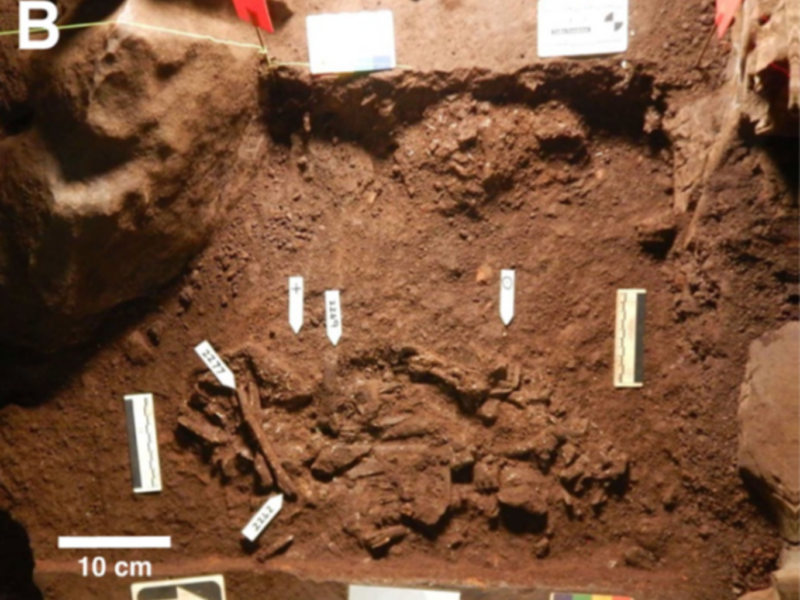
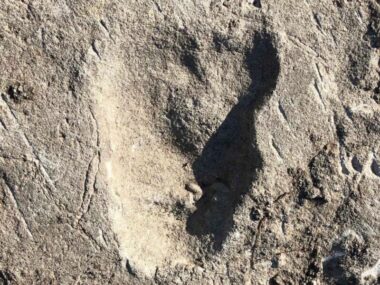
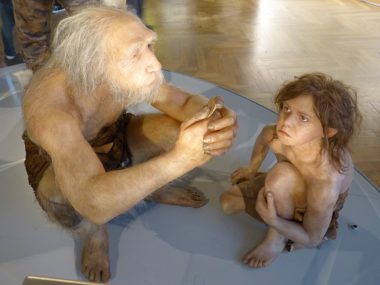

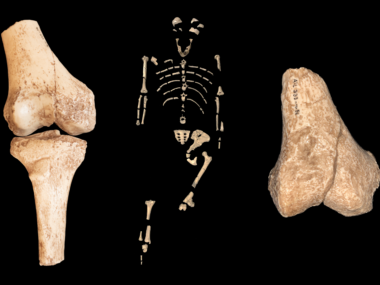
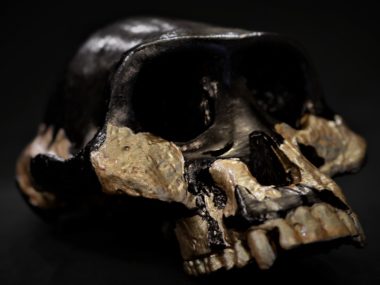





I think we’re approaching this from the wrong angle.
We are trying to identify if the creature was ape and what it did or didn’t do then fit that into our worldview, our paradigm. Rather I think we as followers of Christ should say: If it was made in the image and likeness of God, it’s human. If it had dominion over the things of the earth, its human. If it worked the earth and tended to it that it would yield its fruit and its seed, the creature is human.
The Bible seems to already decipher what is human and what isn’t. If we look through this lens then Homo naledi can be whatever it wants to be and doesn’t threaten our world view. If it farmed the land but looked like an ape, it was merely an “odd looking” human. The only knowledge we have of what physical traits that define being human is “the image of God”, and all I really know of in regards to the physical attributes of God is a very bright light haha!
edit: just continued to read the article and you touched on the same points. God bless!
Thanks for your comments! I agree that cultural evidence is important, and should inform our interpretation of a fossil. Creationists should do further work to more clearly define the cultural and behavioral differences between humans and non-humans.
Interesting and informative!